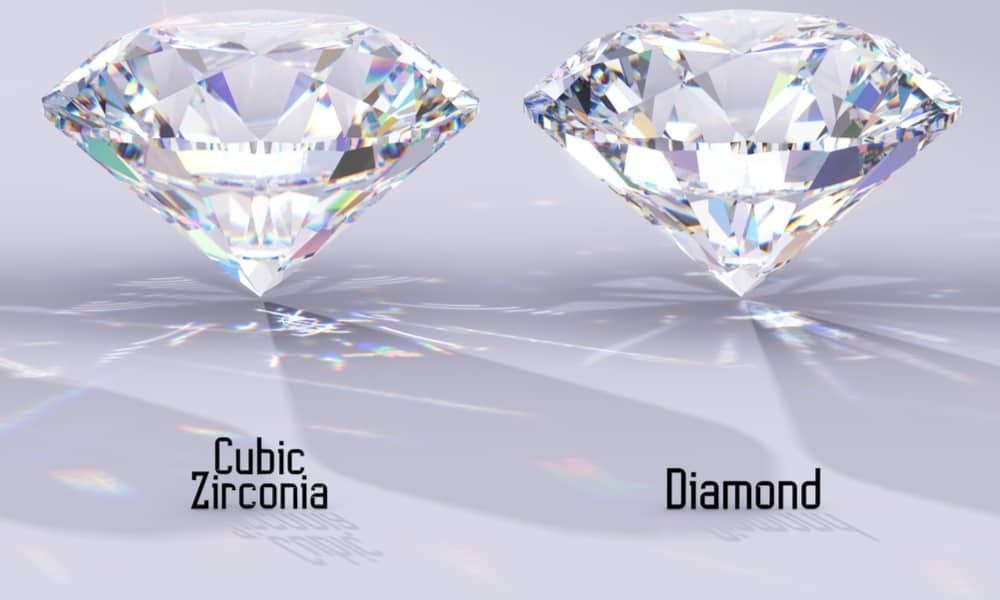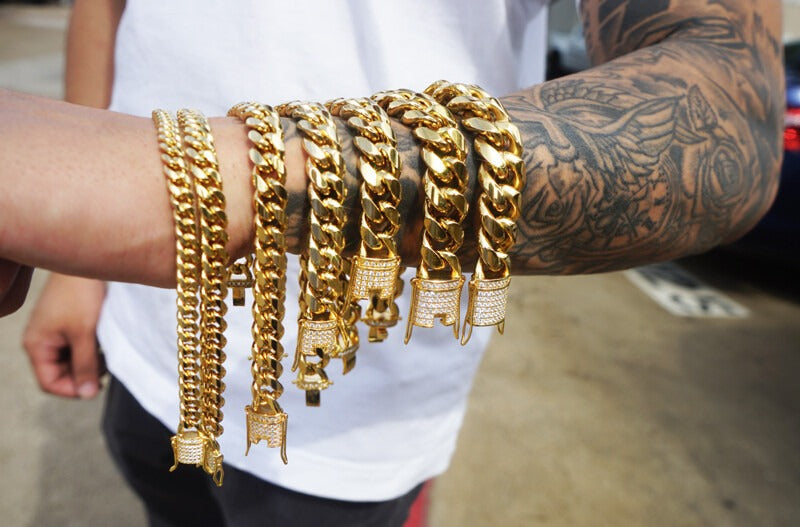Cubic Zirconia vs Diamonds: Key Differences
August 12, 2025

When it comes to fine jewelry, the debate between cubic zirconia vs diamond has been ongoing for decades. Both stones sparkle beautifully, but their differences in durability, value, and appearance are worth noting before making a purchase. Whether you’re shopping for an engagement ring or an iced-out chain from GetIcedOut.co, knowing the truth about CZ vs diamond will help you make an informed choice.
What is Cubic Zirconia?
Cubic zirconia (CZ) is a man-made gemstone created from zirconium dioxide. It was first produced in the 1970s as a cost-effective alternative to natural diamonds. CZ is colorless, flawless, and often mistaken for a real diamond—especially by the untrained eye.
What is a Diamond?
A diamond is a naturally occurring mineral formed under extreme heat and pressure deep within the Earth’s crust. Made from pure carbon, diamonds are the hardest natural substance on Earth, scoring a perfect 10 on the Mohs hardness scale.
CZ vs Diamond – Main Differences
1. Appearance
To the casual observer, diamond cubic zirconia stones may look identical. However:
- Diamonds have a slightly warmer, more natural brilliance.
-
CZ tends to have a more "glassy" look and may display more rainbow flashes.
2. Hardness & Durability
- Diamond: 10/10 on the Mohs scale – virtually scratch-proof.
-
Cubic Zirconia: 8–8.5/10 – still hard, but can scratch and dull over time.
3. Weight
CZ is about 1.7 times denser than diamonds, meaning a CZ of the same size will feel heavier.
4. Price
-
CZ is significantly cheaper than diamonds.
-
A one-carat CZ may cost under $50, while a one-carat diamond could cost thousands.
5. Longevity
- Diamonds retain their sparkle for generations.
- CZ may cloud or lose brilliance over time, especially if worn daily.
Diamond Cubic Zirconia vs Moissanite
It’s not just cubic zirconia vs diamond—many shoppers compare cubic zirconia vs moissanite too.
- Moissanite: Almost as hard as diamonds (9.25/10), with exceptional brilliance.
- CZ: Cheaper but less durable.
- If you want a diamond-like look without the diamond price, moissanite often beats CZ in quality.
CZ Diamonds – The Marketing Term
You may hear jewelers refer to CZ stones as “CZ diamonds.” This is purely marketing—while CZ sparkles like a diamond, it is not a diamond. Always check product descriptions and authenticity before buying.
Why Choose Cubic Zirconia?
- Affordability: Perfect for fashion jewelry or large statement pieces.
- Variety: Available in multiple colors and cuts.
- Ethical Choice: No mining required.
Why Choose Diamonds?
- Prestige & Value: Natural diamonds hold emotional and financial value.
- Durability: Perfect for heirloom jewelry.
- Symbolism: Represents eternal love in engagement rings.
How to Tell the Difference
- Fog Test: Diamonds disperse heat quickly; CZ will fog up.
- Scratch Test: Diamonds can scratch glass easily.
- Certification: Always request a grading report for diamonds.
Buying Tips
- For investment or long-term wear, choose diamonds.
- For budget-friendly fashion pieces, cubic zirconia is a great choice.
-
Buy from reputable sellers like GetIcedOut.co to ensure quality and authenticity.
Conclusion
When comparing cubic zirconia vs diamond, the right choice depends on your priorities. Diamonds win for durability, long-term brilliance, and value, while cubic zirconia offers affordability and a dazzling appearance for less. Whether you prefer the luxury of natural diamonds or the practicality of CZ, understanding their key differences ensures you get the perfect piece for your needs.






